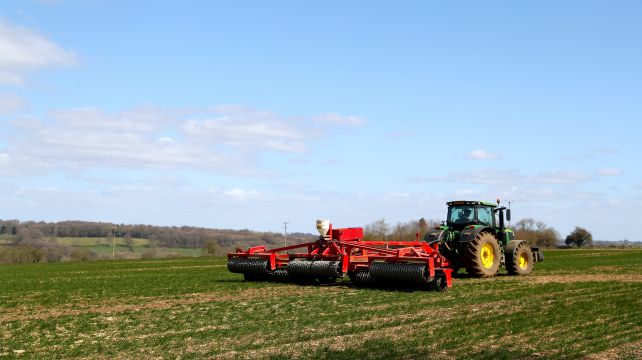Researchers have found that emissions of the substance, also known as laughing gas, are consistent with scenarios where the global mean temperature would rise by 3C from pre-industrial levels.
The 2015 Paris Agreement – a United Nations plan to combat climate change -aims to limit such warming to less than 2C, and ideally no more than 1.5C.
The findings, published in the journal Nature, also show N2O emissions have risen 20% from pre-industrial levels in 1750 due to increased farming to feed a rising global population.
Professor Hanqin Tian, director of the International Center for Climate and Global Change Research at Auburn University’s School of Forestry and Wildlife Sciences, who co-led the study, said: “The dominant driver of the increase in atmospheric nitrous oxide comes from agriculture, and the growing demand for food and feed for animals will further increase global nitrous oxide emissions.
“There is a conflict between the way we are feeding people and stabilising the climate.”
According to the researchers, N2O emissions are increasing faster than any emission scenario developed by the Intergovernmental Panel on Climate Change (IPCC).
N2O is a greenhouse gas that is “300 times more potent than carbon dioxide” and can remain in the atmosphere “for more than 100 years”.
The dominant driver of the increase in atmospheric nitrous oxide comes from agriculture, and the growing demand for food and feed for animals will further increase global nitrous oxide emissions
The researchers found N2O levels in the atmosphere to have risen 20% from pre-industrial levels, from 270 parts per billion (ppb) in 1750 to 331ppb in 2018.
They said it was the fastest growth observed in the past 50 years due to emissions from human activities.
According to the team, human-induced emissions have increased by 30% over the past four decades to 7.3 teragrams of nitrogen per year.
East Asia, South Asia, Africa and South America were found to be the largest contributors to global nitrous oxide emissions with countries including India, China and Brazil showing the highest growth.
But nitrous oxide emissions in Europe decreased in agriculture and the chemical industry, the researchers said, which they attributed to voluntary measures to reduce emissions and more efficient use of fertilisers.
Dr Parvadha Suntharalingam, of University of East Anglia’s School of Environmental Sciences, and one of the authors on the study, said: “This study presents the most comprehensive and detailed picture to date, of N2O emissions and their impact on climate.
“This new analysis identifies the factors driving the steadily increasing atmospheric levels of N2O, and highlights the urgent need to develop effective mitigation strategies if we are to limit global warming and meet climate goals.”







